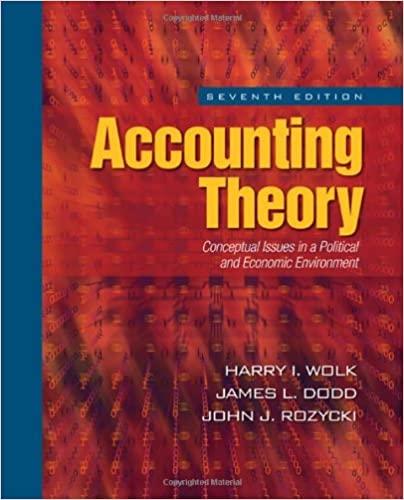Question
Marjorie Knaus, an architect, organized Knaus Architects on January 1, 2018. During the month, Knaus Architects completed the following transactions: A. Issued common stock to
Marjorie Knaus, an architect, organized Knaus Architects on January 1, 2018. During the month, Knaus Architects completed the following transactions:
| A. | Issued common stock to Marjorie Knaus in exchange for $20,000. |
| B. | Paid January rent for office and workroom, $1,900. |
| C. | Purchased used automobile for $28,100, paying $5,800 cash and giving a note payable for the remainder. |
| D. | Purchased office and computer equipment on account, $5,200. |
| E. | Paid cash for supplies, $1,400. |
| F. | Paid cash for annual insurance policies, $3,900. |
| G. | Received cash from client for plans delivered, $13,000. |
| H. | Paid cash for miscellaneous expenses, $2,200. |
| I. | Paid cash to creditors on account, $4,000. |
| J. | Paid installment due on note payable, $800. |
| K. | Received invoice for blueprint service, due in February, $4,250. |
| L. | Recorded fees earned on plans delivered, payment to be received in February, $20,300. |
| M. | Paid salary of assistants, $4,000. |
| N. | Paid gas, oil, and repairs on automobile for January, $1,100. |
| Required: | |||||||||||||||||||||||||||||||||||||||||||||||||||||||||||||||||||||||||||||||||||||||||||||||||||||||||||||||||||||||||||||||||||||||||||||||||||||||||||||||||||||||||||||||||||||||||||||||
| 1. | Record these transactions directly in the following T accounts, without journalizing: Cash; Accounts Receivable; Supplies; Prepaid Insurance; Automobiles; Equipment; Notes Payable; Accounts Payable; Common Stock; Professional Fees; Salary Expense; Blueprint Expense; Rent Expense; Automobile Expense; Miscellaneous Expense. To the left of the amount entered in the accounts, select the appropriate letter to identify the transaction. | ||||||||||||||||||||||||||||||||||||||||||||||||||||||||||||||||||||||||||||||||||||||||||||||||||||||||||||||||||||||||||||||||||||||||||||||||||||||||||||||||||||||||||||||||||||||||||||||
| 2. | Determine account balances of the T accounts. Accounts containing a single entry only (such as Prepaid Insurance) do not need a balance. | ||||||||||||||||||||||||||||||||||||||||||||||||||||||||||||||||||||||||||||||||||||||||||||||||||||||||||||||||||||||||||||||||||||||||||||||||||||||||||||||||||||||||||||||||||||||||||||||
| 3. | Prepare an unadjusted trial balance for Knaus Architects as of January 31, 2018. | ||||||||||||||||||||||||||||||||||||||||||||||||||||||||||||||||||||||||||||||||||||||||||||||||||||||||||||||||||||||||||||||||||||||||||||||||||||||||||||||||||||||||||||||||||||||||||||||
| 4. | Determine the net income or net loss for January.
1. Record these transactions directly in the following T accounts, without journalizing: Cash; Accounts Receivable; Supplies; Prepaid Insurance; Automobiles; Equipment; Notes Payable; Accounts Payable; Common Stock; Professional Fees; Salary Expense; Blueprint Expense; Rent Expense; Automobile Expense; Miscellaneous Expense. To the left of the amount entered in the accounts, select the appropriate letter to identify the transaction. 2. Determine account balances of the T accounts. Accounts containing a single entry only (such as Prepaid Insurance) do not need a balance.
| ||||||||||||||||||||||||||||||||||||||||||||||||||||||||||||||||||||||||||||||||||||||||||||||||||||||||||||||||||||||||||||||||||||||||||||||||||||||||||||||||||||||||||||||||||||||||||||||
Step by Step Solution
There are 3 Steps involved in it
Step: 1

Get Instant Access to Expert-Tailored Solutions
See step-by-step solutions with expert insights and AI powered tools for academic success
Step: 2

Step: 3

Ace Your Homework with AI
Get the answers you need in no time with our AI-driven, step-by-step assistance
Get Started


